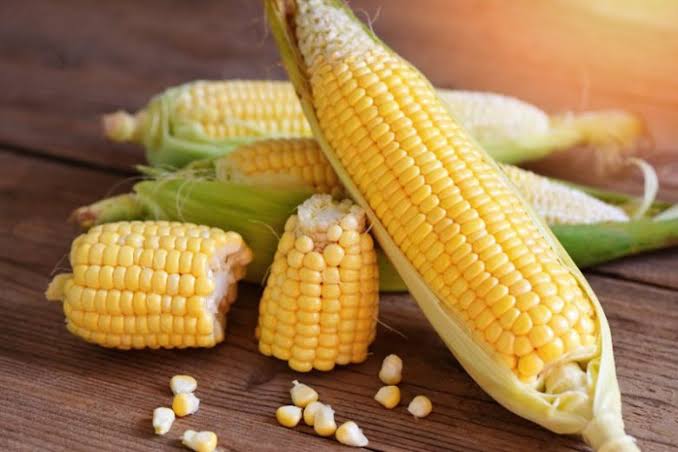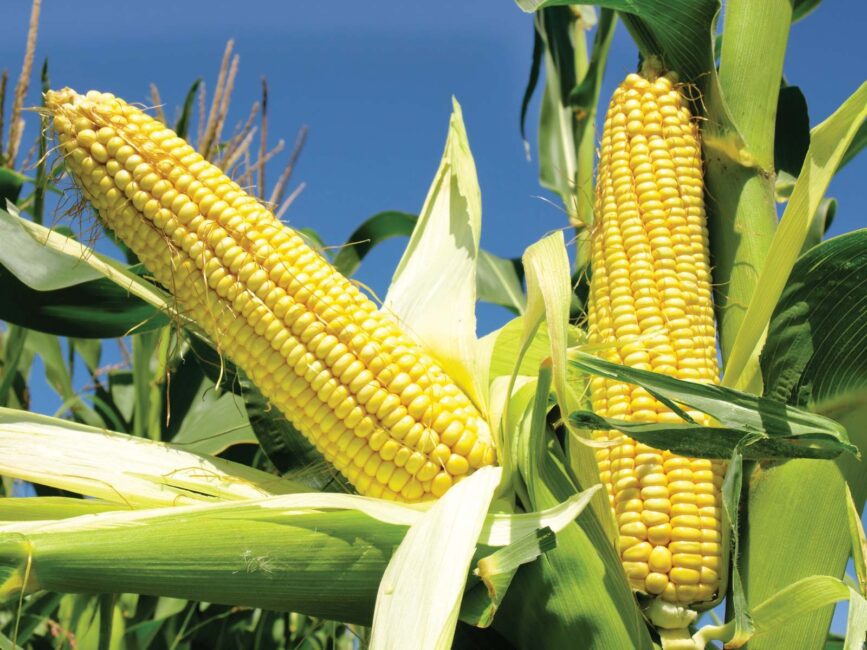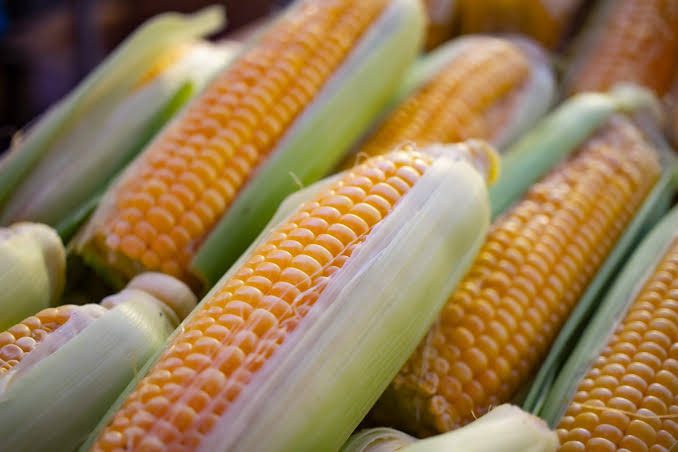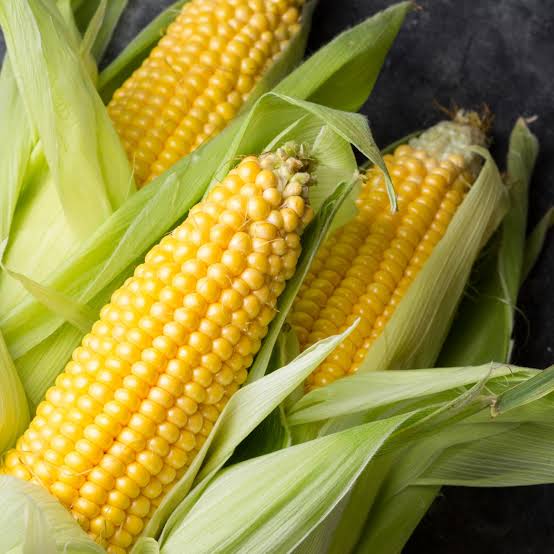Maize, or corn, is a staple crop with immense global importance, feeding millions and contributing significantly to agricultural economies. Known scientifically as Zea mays, maize originated in Central America but has become a global agricultural powerhouse.
Its adaptability to various climates and soil types has led to widespread cultivation, making it essential for food security and economic stability, particularly in regions with rapidly growing populations.
However, achieving optimal yields in maize production requires more than basic farming techniques. Factors like soil fertility, pest control, and crop nutrition are crucial for success.
With these considerations in mind, agricultural enhancements such as “Super Gro” have emerged as powerful tools to support and amplify maize production. Maize is a versatile crop that provides food for humans and livestock and is a valuable raw material for various industries, from food processing to biofuel production.
The plant’s nutrient-rich kernels make it an excellent source of carbohydrates, fiber, and essential vitamins and minerals. However, ensuring high yields in maize production requires a dedicated focus on plant health and optimal growth conditions.
This is where products like Super Gro play a critical role, particularly in improving plant nutrition, water retention, and resilience against environmental stressors.
Maize requires ample nutrients, such as nitrogen, phosphorus, and potassium, for healthy growth and high yields. The right balance of these nutrients contributes to the plant’s structure, root strength, and overall productivity.
However, conventional fertilizers alone are not always sufficient to ensure optimal growth. External factors, including water availability and nutrient absorption, can significantly impact the effectiveness of these fertilizers.
This is where Super Gro for maize enters the picture. Unlike traditional fertilizers, Super Gro works as a wetting agent that enhances the plant’s ability to absorb and utilize nutrients and water more effectively.
By improving the permeability of the soil and increasing water retention, Super Gro reduces water loss, ensuring that the maize plant remains hydrated even during periods of limited rainfall. This is particularly beneficial for maize farmers in arid and semi-arid regions where water scarcity is a significant concern.
Furthermore, maize crops are often susceptible to pest infestations, diseases, and environmental stressors that can limit yield potential. Pest control is integral to successful maize farming, but the overuse of chemical pesticides can lead to soil degradation and decreased fertility over time.
Super Gro, known for its natural formulation, offers an eco-friendly alternative that strengthens the plant’s resistance to pests and diseases without compromising soil health.
Its application minimizes the need for excessive pesticides, promoting a healthier ecosystem within the farmland. This feature aligns with sustainable agricultural practices, which emphasize reducing chemical dependency and preserving soil fertility for long-term productivity.
The role of Super Gro in enhancing maize production extends to its contribution to root development and soil structure. Maize plants, like many other crops, thrive in well-aerated, loose soil that allows roots to grow freely and absorb nutrients without restriction.
Super Gro improves soil aeration, encouraging robust root development, which ultimately translates into stronger and more resilient maize plants. By supporting healthy root systems, Super Gro not only aids in nutrient uptake but also enhances the plant’s resilience to environmental stresses, such as drought and high temperatures.
This resilience is vital in the face of climate variability, as unpredictable weather patterns can adversely affect maize production. Farmers who incorporate Super Gro into their maize cultivation practices are often better equipped to handle these challenges and can maintain more consistent yields even in less-than-ideal conditions.
One of the notable advantages of using Super Gro for maize is its economic viability. While traditional farming methods may involve numerous inputs, including various fertilizers, pesticides, and water management practices, Super Gro offers a cost-effective alternative that reduces the need for multiple products.
Its concentrated formula requires only a small amount to achieve significant results, allowing farmers to reduce input costs without compromising crop quality or yield.
This cost-effectiveness is particularly advantageous for smallholder farmers who operate on limited budgets and need to maximize their return on investment.
With Super Gro, they can invest in a single product that addresses multiple aspects of plant health, from nutrient absorption to pest resistance and soil quality, making it an economically sustainable choice.
In addition to economic benefits, Super Gro for maize also promotes environmental sustainability by reducing the ecological footprint of maize farming.
Conventional agricultural practices often rely heavily on chemical fertilizers and pesticides, which can have adverse effects on the environment, including soil degradation, water contamination, and harm to beneficial organisms.
Super Gro’s eco-friendly formulation mitigates these risks, contributing to healthier soil and a balanced ecosystem. This approach aligns with sustainable agriculture principles, which aim to minimize environmental impact while maximizing productivity.
By choosing Super Gro, maize farmers contribute to a greener, more sustainable agricultural model that protects natural resources for future generations. Moreover, Super Gro enhances the quality of the maize crop by fostering uniform growth and maturity.
Healthy, evenly matured maize plants are more desirable in the market and contribute to higher sales and profitability for farmers. Uniform growth also simplifies the harvesting process, as farmers can gather crops at the same time without worrying about underdeveloped or overripe plants.
This uniformity is a result of the improved nutrient uptake and balanced water distribution that Super Gro provides. When all plants receive adequate nutrients and moisture, they develop more consistently, leading to higher quality yields that command better prices in the market.
This outcome further underscores the value of Super Gro as an essential input in maize farming. Ultimately, the introduction of Super Gro into maize cultivation reflects a forward-thinking approach to agriculture that addresses both productivity and sustainability.
In a world where food demand is rising, and resources are increasingly limited, innovations like Super Gro represent practical solutions to some of agriculture’s most pressing challenges.
By optimizing nutrient absorption, improving water retention, and reducing dependency on chemical inputs, Super Gro empowers farmers to increase their yields while caring for the environment.
Maize farmers, in particular, can benefit greatly from these advantages, as Super Gro’s unique properties align with the crop’s specific needs, from early growth stages to maturity.
Read Also: Roots and Tuber Crops: Types, Cultivation, and Uses
Key Contributions of Maize to Food Security and Nutrition

1. Nutritional Value and Dietary Diversity: As a significant source of calories, carbohydrates, and essential nutrients, maize forms an integral part of daily diets, particularly in low- and middle-income countries. It provides the carbohydrates needed for energy, along with protein, fiber, vitamins, and minerals essential for health.
Yellow varieties contain beta-carotene, which the body converts to vitamin A—a nutrient vital for vision, immune health, and skin integrity. In areas with limited food variety, maize contributes to dietary diversity and helps prevent hunger and malnutrition.
From boiled grains to flour-based products, it offers a range of meal options that increase food variety and resilience in communities where dietary options are limited.
2. Contribution to Food Security: Maize’s adaptability across diverse climates and soil types makes it a cornerstone of food security for many countries. Capable of thriving in variable weather conditions, it remains a dependable crop even in the face of climate uncertainties. For millions across sub-Saharan Africa, Latin America, and Asia, maize serves as a primary staple, ensuring a stable food supply.
As a direct food source and a component of livestock feed, it contributes to both plant- and animal-based foods, diversifying food sources for communities and strengthening the overall food system.
3. Economic Impact and Livelihoods: Beyond its nutritional importance, maize is an economically valuable crop, providing livelihoods for countless smallholder farmers and workers globally.
Many rural economies are heavily reliant on maize production for income and economic stability. With high yields, farmers gain economic benefits that improve living standards, increase access to healthcare, and expand educational opportunities, creating a ripple effect that enhances community welfare.
Maize also drives various value-added industries, such as food processing, starch manufacturing, and biofuel production, which contribute to national GDP and stimulate broader economic growth through job creation and industry expansion.
4. Affordable Source of Energy and Protein: Maize serves as a cost-effective source of both calories and protein, especially in low-income regions. While it may contain less protein than some other grains, maize remains a key protein source for communities with limited access to animal-based foods.
This affordability makes it a staple food option for households where economic limitations restrict dietary choices. In forms like maize meal or porridge, it becomes accessible for communities in food-insecure areas, providing a consistent, energy-dense food source that supports daily caloric and nutritional needs.
5. Versatility in Food Products: The adaptability of maize enables it to be processed into a wide array of food products, adding diversity and improving accessibility. It serves as the foundation for products like maize flour, maize oil, and maize syrup, which are ingredients in various foods globally.
Culturally significant foods like tortillas, polenta, and porridge often use maize as their primary ingredient, enriching the food culture of many regions. Additionally, fermented maize products are a part of traditional diets in some areas, contributing beneficial probiotics that aid digestive health.
By accommodating various dietary needs and preferences, it serves as a vital component in meeting food security on both nutritional and cultural levels.
6. Climate Resilience and Adaptability: As climate change continues to affect agriculture through unpredictable droughts, temperature fluctuations, and other challenges, crop resilience is essential.
Maize’s adaptability and resilience to various environmental stressors, such as drought and certain pests, make it invaluable for sustaining food security in vulnerable regions. Select varieties are bred to endure drought and resist pests, enabling stable yields even under challenging conditions.
This resilience is critical in regions sensitive to climate shifts, ensuring steady production that protects communities from food shortages and supports adaptation to climate variability.
7. Biofortified Varieties for Nutritional Enhancement: Recent agricultural advances have produced biofortified maize varieties rich in essential nutrients, including zinc, iron, and provitamin A.
These biofortified crops are designed to address nutritional deficiencies among populations reliant on maize as a dietary staple. In areas where vitamin A and iron deficiencies are prevalent, these enriched varieties can help improve health outcomes.
By incorporating biofortified maize, governments and health organizations tackle nutrient gaps without requiring dietary changes, improving community health while leveraging an existing food staple. This approach helps reduce malnutrition and nutrient deficiencies with minimal disruption to traditional diets.
8. Reducing Food Waste through Storability: Maize’s long shelf life is advantageous for preventing food waste, which supports food security efforts. Unlike more perishable crops, properly dried and stored maize grains can last for extended periods, making it a reliable food source during seasonal shortages or emergencies.
In many rural communities, surplus maize is stored as a buffer against future shortages, ensuring continuous food access when fresh food is limited. This storability not only reduces waste but also strengthens food systems by supporting stable food supplies, particularly in regions prone to fluctuations in food availability.
9. Role in Sustainable Farming Practices: Maize plays a role in sustainable agriculture through practices like crop rotation and intercropping, which maintain soil health and biodiversity. When planted in rotation with nitrogen-fixing crops like beans, maize benefits from improved soil fertility and reduced pest presence.
These sustainable practices help preserve soil nutrients, increase yield potential, and lower the need for chemical fertilizers, promoting long-term productivity and environmental stewardship. By integrating maize into sustainable farming systems, farmers contribute to healthier ecosystems, ultimately supporting food security.
10. Integral to Emergency Food Aid: Due to its storability, accessibility, and nutrient content, maize is often a primary choice in emergency food aid programs during crises. Its inclusion in food rations helps provide immediate nutrition to populations affected by disasters, conflicts, or economic hardships.
Products like fortified maize-soy blends or maize meal can be easily stored and transported, providing essential calories and nutrients during critical times. This reliable crop supports global food security efforts by serving as an accessible, nutrient-rich solution for hunger relief in emergencies.
Read Also: Growing Conditions, Requirements, And Cultivation Methods For Different Crops
Five Economic Importance of Maize Production

1. Employment Generation and Livelihood Support: The production of maize plays a significant role in creating employment opportunities and supporting livelihoods, particularly in rural areas.
Small-scale farmers, especially in developing countries, rely heavily on maize cultivation as their primary source of income. It is often one of the easiest crops to grow, with relatively low input costs and high yields, making it accessible to a large number of rural households.
By cultivating maize, these smallholders gain income that enables them to meet basic needs, support families, and invest in their farms, contributing to poverty reduction and economic stability.
The entire maize production chain—from planting and harvesting to processing and distribution—also creates a wide range of jobs. Field laborers, transport workers, processing plant employees, and market vendors all find employment in this extensive network.
In countries like Nigeria, Mexico, and the United States, which are some of the largest maize producers, millions of people are engaged in the industry. This economic engagement provides income stability and helps reduce rural-urban migration by offering viable economic opportunities within rural communities.
2. Industrial Applications and Product Diversification: Maize’s versatility allows it to be transformed into a variety of products that serve multiple industries, making it highly valuable for economies worldwide.
The food industry uses maize to produce items such as cornmeal, corn oil, corn starch, and sweeteners, which are essential ingredients in many processed foods.
Corn syrup, for instance, is widely used as a sweetener in beverages and packaged foods, while corn oil is a common ingredient in cooking oils and margarines.
These maize-based products are staples in both local markets and global supply chains, generating substantial revenue and supporting a network of businesses. Beyond the food sector, maize is integral to the production of biofuels, animal feed, biodegradable plastics, and even pharmaceuticals.
Ethanol, a biofuel derived from maize, is increasingly used as an alternative to fossil fuels, helping to reduce carbon emissions and decrease dependence on imported oil.
Many countries, particularly the United States and Brazil, have incorporated ethanol into their energy strategies, which helps diversify energy sources and creates additional revenue streams for maize producers.
The demand for biodegradable plastics made from maize-based materials, such as polylactic acid, is also growing, as industries shift toward more sustainable practices. These varied industrial applications showcase maize’s adaptability, supporting economic diversification and driving innovation across multiple sectors.
3. Export Revenue and International Trade: Maize is one of the most globally traded agricultural commodities, contributing significantly to the economies of major exporting countries.
The United States, Brazil, Argentina, and Ukraine are some of the largest exporters, supplying a substantial portion of the world’s maize. The revenue generated from maize exports not only supports the agricultural sector but also strengthens the national economies of these countries.
For many developing nations, exporting maize provides a valuable source of foreign exchange, helping stabilize their economies and fund development projects. Maize’s role in international trade extends beyond direct exports of the grain itself.
Processed maize products, such as starch, syrup, and ethanol, are also traded globally, enhancing the crop’s economic footprint. As global demand for maize and its by-products continues to rise—driven by population growth and increased consumption of meat (which requires maize-based feed for livestock)—the revenue from maize exports is expected to remain robust.
This strong demand encourages investments in maize production, processing infrastructure, and technology, all of which help enhance the competitiveness of the maize industry on a global scale.
4. Contribution to the Livestock and Poultry Industries: Maize is a primary ingredient in animal feed, making it crucial for the livestock and poultry industries. As a high-energy feed source, maize provides the necessary nutrients for livestock growth, milk production, and egg-laying capacity, significantly enhancing the productivity of these sectors.
The global rise in meat consumption has led to an increased demand for animal feed, further highlighting maize’s importance in supporting meat and dairy production.
Countries that depend on livestock farming for economic growth rely on maize as an affordable and nutritious feed option, which helps to stabilize feed costs and improve profitability.
For example, in the United States, over a third of the maize produced is used as livestock feed, directly benefiting the dairy, beef, and poultry sectors. The role of maize in animal feed also drives employment in related industries, from feed production to livestock farming and meat processing.
Additionally, as livestock production grows to meet consumer demand, the entire supply chain—from feed manufacturing to retail—benefits economically.
The relationship between maize and the livestock industry creates a mutually reinforcing system that supports food production, economic growth, and rural employment.
5. Development of Rural Economies and Poverty Alleviation: Maize cultivation has a transformative impact on rural economies, especially in regions where agriculture remains the primary economic activity.
By providing a reliable and marketable crop, maize helps elevate rural incomes and contributes to poverty alleviation. Smallholder farmers can sell maize at local markets or to food processing companies, allowing them to earn income and improve their quality of life.
In some cases, governments and organizations promote maize as a strategic crop for food security, further boosting support and resources for farmers.
The steady income from maize production enables farmers to invest in better seeds, equipment, and farming techniques, which can lead to higher productivity and further economic gains.
Rural communities benefit from increased trade and commerce as demand for agricultural inputs, storage, and processing facilities grows. The maize value chain encourages the establishment of related services, such as transportation, storage, and finance, further stimulating economic growth in rural areas.
Moreover, many governments offer subsidies and incentives to maize farmers, recognizing the crop’s contribution to economic stability and food security. These programs empower farmers, reduce poverty, and enhance the resilience of rural economies, fostering long-term economic growth.
Frequently Asked Questions on the Economic Importance of Maize Production

1. How does maize contribute to economic growth?
Maize contributes significantly to economic growth through employment generation, export revenue, and support for numerous industries. From smallholder farmers to large-scale agribusinesses, maize production provides a dependable income for millions worldwide.
In countries where maize is a major crop, it boosts local economies by supporting agricultural jobs, facilitating trade, and generating revenue. It also plays a vital role in various sectors like food processing, biofuel, and livestock feed, driving economic activity and promoting growth across multiple industries.
2. Why is maize important for the livestock industry?
Maize is a high-energy feed source that provides essential nutrients for livestock, making it a staple in animal feed formulations. Its carbohydrates and protein support growth, reproduction, and overall health in animals like poultry, cattle, and pigs.
By ensuring that livestock has a cost-effective and nutrient-dense feed, maize supports the productivity and profitability of livestock farming, which, in turn, benefits economies reliant on meat, milk, and egg production.
The livestock industry’s dependence on maize is a significant factor in the crop’s economic importance, as it supports not only farmers but also the supply chain of feed production, transport, and meat processing.
3. How does maize support food security and income generation in rural areas?
In rural areas, where agriculture often forms the backbone of the economy, maize provides both a reliable food source and a means of income. For small-scale farmers, maize is a manageable crop with relatively low input costs and high yield potential, making it accessible and profitable.
Many rural families rely on maize sales to earn income that helps cover household expenses, including healthcare, education, and reinvestment in farming equipment. By supporting rural incomes and stabilizing food supplies, maize reduces poverty and enhances economic resilience in these communities.
4. What role does maize play in international trade?
Maize is one of the most traded agricultural commodities, with major exporters like the United States, Brazil, Argentina, and Ukraine supplying it to global markets.
The export of maize provides substantial foreign exchange earnings, which strengthens national economies and funds development projects. Its by-products, such as corn syrup, corn starch, and ethanol, also contribute to international trade.
Countries with large-scale maize production benefit from consistent demand, as it remains a staple food and a crucial industrial input worldwide, driving global trade and enhancing economic stability.
5. How does maize support industrial applications beyond food?
Maize is incredibly versatile and supports various industrial applications beyond food products. It is used in biofuel production (particularly ethanol), which offers an alternative to fossil fuels and helps reduce carbon emissions. Maize is also a key ingredient in the production of biodegradable plastics, pharmaceuticals, and chemicals.
In the food industry, maize-derived products like corn syrup and starch are used extensively as sweeteners, thickeners, and stabilizers. These applications expand maize’s economic impact, supporting manufacturing jobs and encouraging investment in related industries.
6. What is the impact of maize on poverty reduction?
Maize contributes to poverty reduction by providing affordable, high-yield crops that help farmers earn income and improve their livelihoods. By supporting the economic stability of rural communities, maize enables farmers to afford essentials, access healthcare, and invest in education.
Government programs often promote maize cultivation to boost food security and generate income in low-income regions, offering subsidies and resources to small-scale farmers. This crop thus becomes a tool for economic upliftment, creating a foundation for reducing poverty and improving living standards in maize-growing regions.
Read Also: Complete Composting Guide for Beginners
Do you have any questions, suggestions, or contributions? If so, please feel free to use the comment box below to share your thoughts. We also encourage you to kindly share this information with others who might benefit from it. Since we can’t reach everyone at once, we truly appreciate your help in spreading the word. Thank you so much for your support and for sharing!

